Traditional Braces – Bedford, TX
The Tried-and-True Way to Straighten Teeth
If you have misaligned teeth, you may be at risk of a number of oral health problems. You may also feel some embarrassment due to the way your teeth look. The team at Omega Dental of Bedford is ready to help with our orthodontic treatment options. Most people with bite problems and other orthodontic issues are candidates for traditional braces, which are a tried-and-true way to straighten teeth. Continue reading to learn more about this service, and give us a call when you are ready to book your consultation.
Why Choose Omega Dental of Bedford for Traditional Braces?
- Caring & Highly Skilled Dental Team
- Convenient Appointment Times
- Predictable Treatment Results
How Do Traditional Braces Work?

Traditional braces use a system of brackets and wires to apply gentle, sustained pressure to the teeth. As the braces are periodically adjusted (every 6 – 8 weeks), the teeth and bite gradually move into proper alignment. Depending on the details of your situation, you may need to wear braces for 12 – 36 months to achieve optimum results. You may also need some accessories to help them do their job properly.
What Orthodontic Issues Can Braces Fix?

Braces are capable of correcting most orthodontic issues, from the mild to the severe. During your consultation, we will let you know for sure whether braces are a suitable option for your unique situation. In the meantime, here is an overview of a few common problems that braces are often used to address:
Bite Misalignment
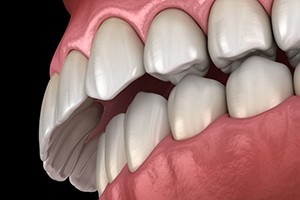
Overbite, underbite, crossbite, and open bite are all forms of malocclusion. Such bite problems can interfere with your oral health and adversely affect your appearance. Braces, usually with the help of accessories like small rubber bands and other devices, can correct most cases of malocclusion. The goal is to allow your upper and lower jaws to work harmoniously together.
Crowded & Crooked Teeth
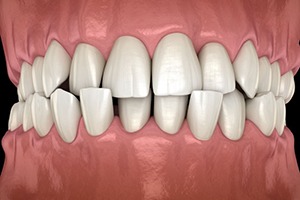
Crowded, crooked teeth not only look unpleasant, but they can also trap food debris between them, putting you at an increased risk of gum disease and cavities. Your teeth may also hit one another at odd angles and be susceptible to chips and breakage. Braces may be able to shift your teeth so each one has the space it needs to function optimally.
Gapped Teeth
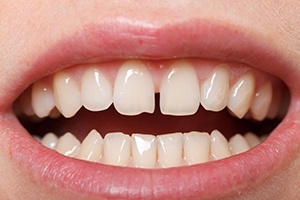
A gap between your teeth may make you feel self-conscious about your appearance, and it can leave your gums vulnerable to harm. Braces are often able to move a patient’s teeth closer together, resulting in a more confident and healthier smile.
Caring for Your Braces
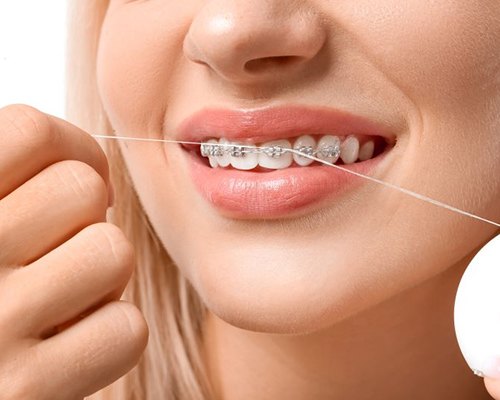
Here are some tips to help you take good care of your braces:
- Be sure to brush and floss regularly. A floss threader or other special tools can help you to navigate around your brackets and wires.
- Bring an oral hygiene kit with you when you are away from home so you can maintain a clean mouth.
- Avoid foods that might damage your braces, such as extremely hard or sticky items.
- Do not miss any scheduled orthodontic checkups. You should also continue to attend regular cleanings and exams.
- Wear an orthodontic mouthguard if you play sports.
Understanding the Cost of Traditional Braces
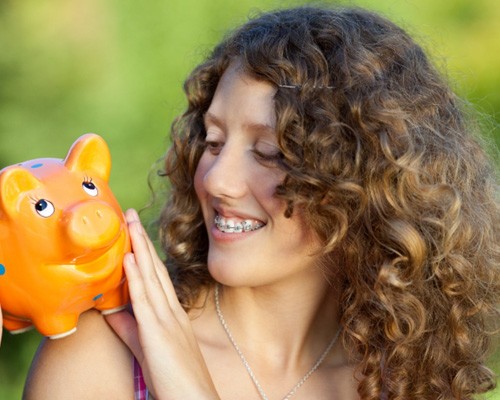
One of the strengths of orthodontics is that they’re versatile enough to deal with all kinds of issues. However, this same variability can cause problems when trying to budget for the treatment, as there are several factors that can affect what your orthodontics cost overall.
If you want to know a little bit more about the price of your braces before we give you your estimate, here are a few variables you may want to keep in mind.
Factors That Affect the Cost of Traditional Braces

While it’s not possible to say for sure what your braces are going to cost you until we meet you in person, there are a few factors that are worth considering if you’re trying to budget for your orthodontic treatment. The most prominent one is the length of your treatment—the more time it takes to straighten your teeth, the more your braces are likely to cost you in the long run.
This in itself comes down to several factors:
- Your age. The older you are, the more firmly set your teeth will be in your jaw.
- How severe your misalignment is.
- How well you comply with treatment guidelines.
In addition, any other orthodontic appliances you need, like space maintainers and palate expanders, will need to be factored into the cost of treatment as well.
Professional Braces vs. “DIY” Braces: Which Costs More?
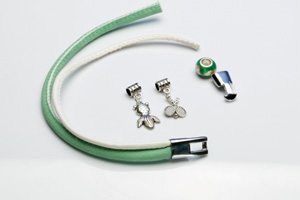
If you’ve spent any amount of time on the internet, you’ve probably encountered a fair amount of DIY guides to dental care, including braces. People on TikTok and Youtube claim to be able to get results comparable to braces with an amalgamation of household materials, including earring backs, rubber bands, superglue, and whatever else they can get a hold of.
The problem is that orthodontics is incredibly tricky, and without precision you could wind up moving your teeth into worse alignment than they were in beforehand. Many of the materials that you’d find around the house are also toxic and leaving them in your mouth for an extended period of time could cause serious issues.
All this to say that if you want to get professional-level results, you’ll need to visit a professional.
Does Dental Insurance Cover Braces?
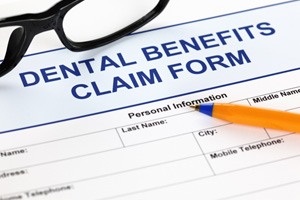
Insurance coverage for braces can be a little bit hit-or-miss. It’s often difficult to say for sure whether you’ll be able to have your orthodontics paid for, but this is fortunately a bit more common in the case of traditional orthodontics than for clear aligners. Moreover, many plans that do cover braces only cover them for people under the age of 18, and only in cases when they’re deemed medically necessary.
If you qualify for coverage, you might be able to get as much as 50% of your orthodontics paid for. That being the case, it’s a good idea to consult with your insurance company to see whether your benefits apply to traditional braces.
Options for Making Braces Affordable

If you don’t have insurance, or if yours doesn’t cover braces, you may want to think about using payment plans to make care more affordable.
You’ll be pleased to learn that we have a variety of options in this regard. We work with both Cherry and CareCredit, financing firms that offer 0% APR terms to patients who qualify, and longer payment periods for those who need them.
With these options at your fingertips, you have no shortage of opportunities to make the care you receive from us affordable. Give us a call , and we’ll be happy to help you explore all of them.
Traditional Braces FAQs
Am I Too Old to Get Braces?
Traditional are more often associated with childhood and adolescence, but there is no upper age limit for braces! As an adult, your teeth are more firmly embedded into your jaw than they were when you were a child, so it may take more time to reposition them. In order to get braces, your age isn’t an important factor, but you must have healthy teeth and a strong jawbone. If you currently have any oral health issues, like cavities or gum disease, they will need to be addressed ahead of time.
What Happens After You Get Your Braces Off?
After you complete your orthodontic treatment, your teeth will naturally want to shift back to their original positions – especially in the first few months after your braces are removed. To keep this from occurring, you must wear a retainer. The amount of time that retainers need to be worn varies, but eventually, you will be able to wear it less and less as time goes on. You may start out wearing it 24/7 and eventually only need to wear it at night.
Why Do My Teeth Feel Loose with Braces?
It’s understandable to be worried about your teeth feeling slightly loose when you have braces, but don’t fret! This is actually normal. It’s a sign that your treatment is working. To align your teeth, your dentist targets specific teeth along your arch to apply force with your brackets and wires. This process will slightly loosen the ligaments that hold your teeth in place, therefore allowing the braces to adjust your teeth’s positions. This strange sensation will subside after you have your braces taken off. As soon as your jawbone has gotten used to the new position of your teeth, it reabsorbs and solidifies them in place, so the feeling will fade.

